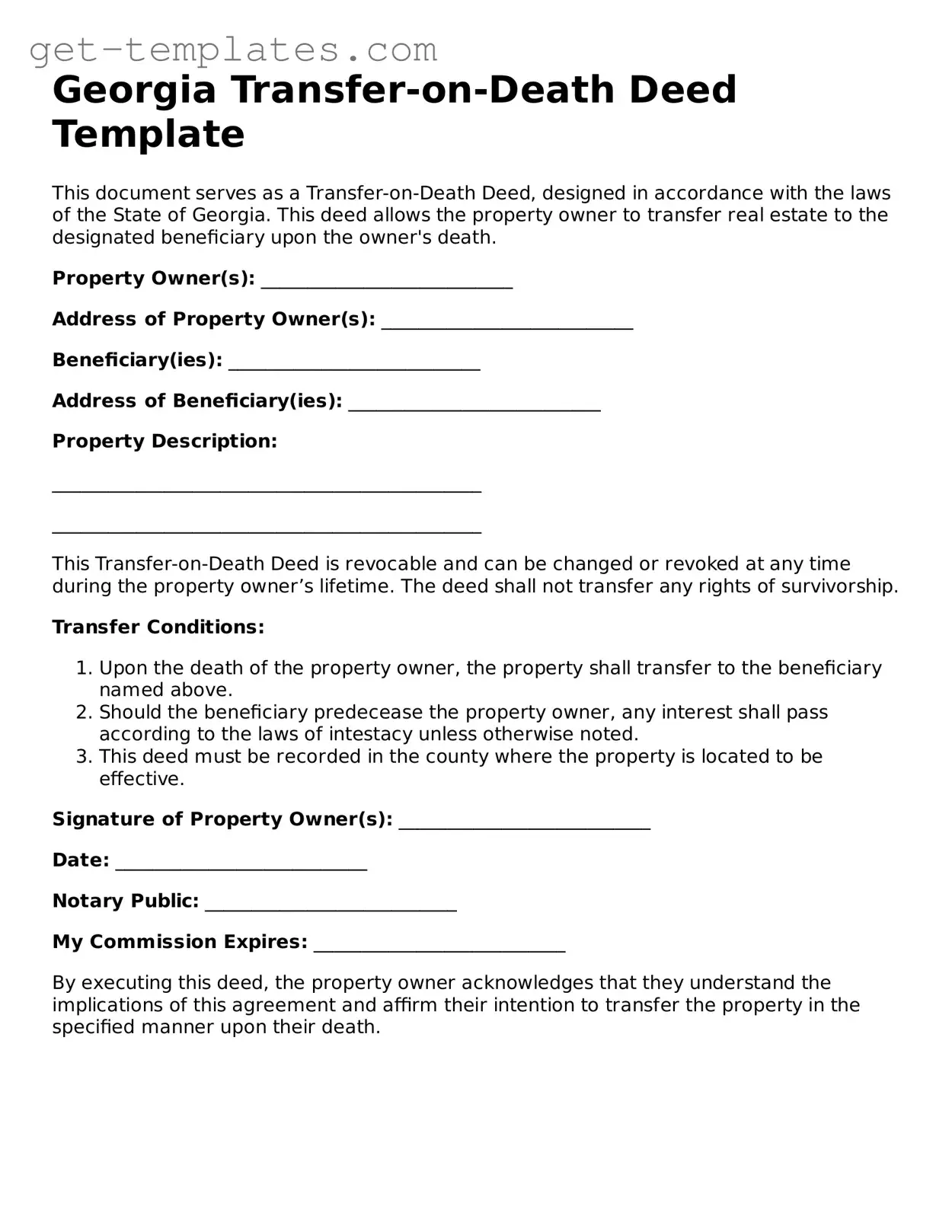Georgia Transfer-on-Death Deed Template
This document serves as a Transfer-on-Death Deed, designed in accordance with the laws of the State of Georgia. This deed allows the property owner to transfer real estate to the designated beneficiary upon the owner's death.
Property Owner(s): ___________________________
Address of Property Owner(s): ___________________________
Beneficiary(ies): ___________________________
Address of Beneficiary(ies): ___________________________
Property Description:
______________________________________________
______________________________________________
This Transfer-on-Death Deed is revocable and can be changed or revoked at any time during the property owner’s lifetime. The deed shall not transfer any rights of survivorship.
Transfer Conditions:
- Upon the death of the property owner, the property shall transfer to the beneficiary named above.
- Should the beneficiary predecease the property owner, any interest shall pass according to the laws of intestacy unless otherwise noted.
- This deed must be recorded in the county where the property is located to be effective.
Signature of Property Owner(s): ___________________________
Date: ___________________________
Notary Public: ___________________________
My Commission Expires: ___________________________
By executing this deed, the property owner acknowledges that they understand the implications of this agreement and affirm their intention to transfer the property in the specified manner upon their death.
